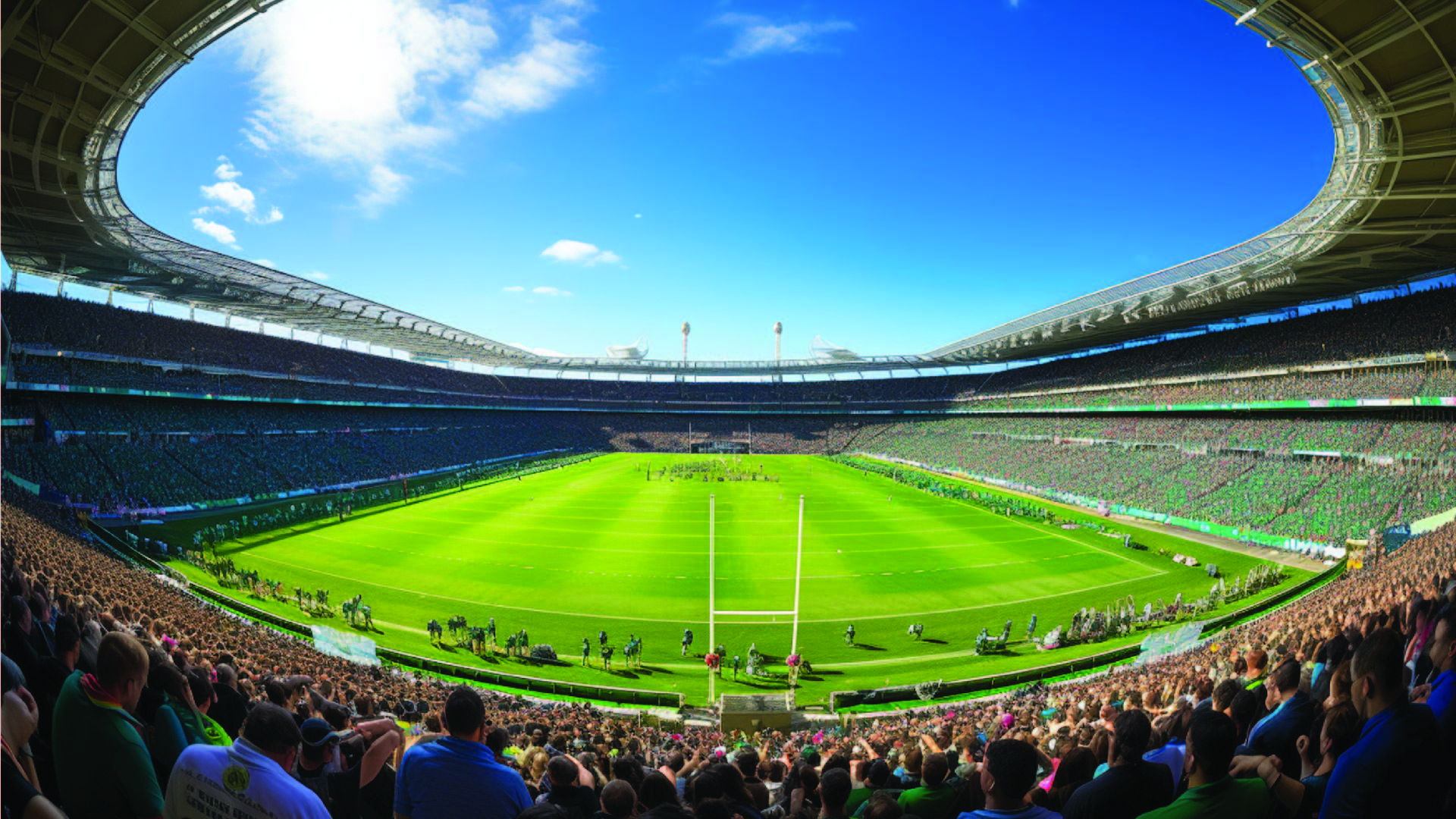This article was co-authored by Hattie Wilson.
In recent years, evidence of the link between concussions and repeated head trauma sustained in contact sports, and the short and long-term impacts of such injuries on an individual’s health, has gained increasing awareness and concern, both in Australia and internationally.
Consequently, on 1 December 2022, the Senate referred an inquiry on this subject to the Senate Community Affairs References Committee (Committee) for inquiry and report. The purpose of the inquiry was “to explore the current evidence and challenges regarding contact sport-related concussion and repeated head injuries, and consider measures to improve the identification and prevention of these injuries, as well as reduce their short and long-term impacts”. The Committee’s report was published in September 2023.
As noted in its report, the Committee heard evidence and received submissions from a wide range of participants including government departments and agencies, medical experts and bodies, research organisations, lawyers, national sporting organisations, professional sporting codes, and players associations. The Committee also heard personal accounts from former athletes and families of former athletes about the impacts that sport-related concussion and head injuries had on them and their loved ones.
The report explores five key topics and makes a total of 13 recommendations. A summary of these topics and the recommendations made by the Committee is detailed below.
Significantly, the Committee notes in the report that the issue of sports-related concussions and head trauma is both complex and contentious. Rather than seeking to discourage or dissuade sports participation, the Committee aims to provide an outline of the possible next steps to ensure the safety of athletes so that sport in Australia can continue to flourish, stating that the paramount consideration for professional sports must be the safety and well-being of athletes.
Long term health impacts of concussions and repeated head trauma
The Committee was given evidence about the link between sport-related concussion and repeated head trauma and long-term neurological conditions such as early onset dementia, motor neuron disorders, mood disorders, psychosocial disorders and most significantly, Chronic Traumatic Encephalopathy (CTE). CTE is a neurodegenerative disease which is associated with a history of repeated head trauma. Typical symptoms of CTE include memory loss, confusion, impaired judgment, emotional instability, erratic behaviour, impulsive anger-control problems and depression. Currently, CTE can only be diagnosed by post-mortem examination of brain tissue.
For example, the report refers to evidence that suggests contact sports participants are up to four times more likely to die from some form of neurodegenerative disease than those who don’t, even after all other risk factors have been excluded. It was also noted that there have been 12 confirmed cases of CTE in retired athletes in Australia. Despite the association being well recognised, however, the report notes that it is unknown how strong the association is, what types of concussions and dose effect is required, and the impact of other potential risk factors.
The Committee also heard personal stories from a number of retired athletes and families of athletes who suffered concussions or repeated head trauma during their sporting careers and who either were still, or were prior to their passing, suffering from the effects of neurodegenerative disease. This included testimony from the families of three former professional athletes who suffered CTE before they died. One of these athletes was Shane Tuck, a former professional AFL footballer and a father of two, who took his own life at 38 years old after a long battle with CTE.
The Committee agreed that there was ‘clear evidence’ of a causal link between repeated head trauma and concussions and subsequent neurodegenerative diseases such as CTE, and a need for continued research to further understand this causative link. While important research questions remain, the Committee urged national sporting bodies, community sports clubs and governments alike to act now, and to continue to adopt and apply precautionary measures whilst the evidence settles.
The Committee made four recommendations to support ongoing research in this area, including that the Australian Government and sporting organisations continue to fund research into the effects of concussion and repeated head trauma on at-risk cohorts who incur these injuries during their participation in sport.
Data collection and diagnosis
The Committee was given evidence that more than 3,000 people are estimated to be hospitalised in Australia every year for sports related concussions, and that the number of hospitalisations ‘radically underestimate’ the prevalence of sports related concussions. It was also given evidence that the frequency of sports related concussions is ‘not known’ as there is a lack of data on the rates of concussions sustained during sports in Australia, which precludes effective monitoring of trends and proper evaluation of potential policy changes and interventions.
The Committee was also given evidence about the challenges in diagnosing concussions, such as inconsistent medicals definitions, limitations of current testing protocols, and the fact that signs and symptoms of concussion can be subtle and difficult to detect.
The Committee agreed that there is ‘an urgent need for better data collection of the incidence of concussion in contact sports in Australia’ and recommended that:
- The Australian Government establish the National Sports Injury Database as a matter of urgency to address the lack of sports injury data available in Australia.
- Professional sporting codes collect data on concussions and identified sub-concussive events and share this data with the National Sports Injury Database.
Culture and education
A number of participants raised concerns with the Committee about cultural factors within sport, both at the elite and community level, which contribute to issues such as the under-reporting of incidents, concealing of symptoms and poor management of symptoms. This included personal accounts from former athletes in a range of sports which highlighted how player safety and wellbeing can be impacted by cultural and competitive elements of sport.
For example, the Committee was given evidence about:
- ‘Win at all costs’ attitudes that prioritise sporting success over player welfare and safety.
- Athletes ‘playing on’ through injuries due to stigma around admitting when they are hurt or wanting to ‘prove themselves’ to their team.
- The impact of elements such ‘psyche’ of professional athletes, internal and external pressures to perform, team selection pressures, athletes not wanting to let their team down.
- The fact that concussion is an invisible and self-reporting injury, compared to other physical injuries which are more obvious and identifiable.
- The role of big sporting events such as Olympic and grand finals.
Concerns were also raised with the Committee about a lack of education, awareness and resources to manage concussion risks at the community level, both within community sporting organisations and local GPs, leading to poor management of concussions.
The Committee agreed with these concerns and recommended that:
- The Department of Health and Aged Care, in consultation with relevant stakeholders, consider how best to improve community awareness and education regarding concussion and repeated head trauma.
- The Australian Government, in partnership with State and Territory Governments, consider how best to address calls for the development of standardised, evidence-based, and easy-to-access concussion and head trauma guidelines for GPs; suitable general practice consultations for people with concussion, repeated head trauma and other complex care needs; and increased training for first aid responders at sporting venues that focuses specifically on treating concussion and head injury.
On-field harm minimisation strategies
The Committee was given a wide range evidence about on-field harm minimisation strategies implemented in contact sports in Australia and overseas such as rule modifications, minimum ages for children, skill development and training, use of head gear and stand down and return to play protocols. While recognising the steps taken by national sporting organisations in this regard, the Committee noted that bolder strategies have been implemented overseas to keep participants safe, particularly in regards to children and adolescents.
The Committee also expressed concerns about disparate return to play protocols across various sports, leading to confusion, and agreed with participant submissions that the timeframe for return to sports should be determined by the severity of the head injury, and not the sport in which the injury occurred. The Committee expressed their view that return to play guidelines that many codes currently have in place are insufficient, and that stand-down periods post-concussion should be longer than 11 or 12 days, with a more conservative period of 30 days required for children.
Finally, the Committee also expressed concern about evidence from some submitters indicating that there is inadequate implementation of and adherence to concussion guidelines, policies and protocols in many sports in Australia.
The Committee recommended that:
- National sporting organisations in Australia explore further rule modifications for their respective sports in order to prevent and reduce the impact of concussion and repeated head trauma.
- Australian Government, in collaboration with medical experts, develops return to play protocols, adaptable across all sports, for both children and adults that have incurred a concussion or suffered a head trauma.
- Australian Government consider developing a national strategy to reduce the incidence and impacts of concussion, including binding return to play protocols and other rules to protect sport participants from head injuries.
Remediation and support
The final topic examined in the report was the sources of remediation and support available to sports people suffering from ill health effects due to experience concussions and repeated head trauma, and the deficiencies in the systems available. The Committee again heard personal accounts from former athletes about their lived experienced in accessing remediation and support, including challenges they have faced.
The key sources of support referred to by the Committee include those available from collective bargaining agreements (e.g. injury hardship funds offered by various football codes in Australia), private health and other insurance arrangements, the public health system and civil lawsuits.
Some of the deficiencies raised in relation to these systems included the following:
- Significant disparities in the support available to professional athletes, compared to players in the broader community.
- Disparities in the support available to retired players from their sporting organisations, as compared to current players.
- Barriers to civil lawsuits due to the range of arguments available to defendants (e.g. that there was an ‘obvious’ risk of injury, voluntary assumption of the risk etc.) and there being minimal case law on this topic.
- Professional sportspeople are generally excluded from workers compensation legislation in Australia
- Australia does not have a national no-fault accident injury insurance scheme
It was noted that in terms of civil lawsuits, there has been recent litigation on this topic internationally, for example, in the United States of America, there were a series of class actions brought by players against the National Football League (NFL), resulting in a $1 billion settlement. In these actions, players alleged that the NFL had 'failed to take reasonable actions to protect players from the chronic risks created by concussive and sub-concussive head injuries and fraudulently concealed those risks from players.’ In Australia, a class action lawsuit has been lodged in Victoria on behalf all professional AFL players who sustained concussion-related injuries while playing or training between 1985 and 14 March 2023. More than 60 former players have come forward to join the class action, and estimated total costs to the AFL could be close to $1billion.
It was also noted by an inquiry participant that professional sporting organisations are employers and their players are employees, and that under work health and safety law, employer sporting organisations have a statutory duty to do what is reasonably practicable to prevent injuries to their employees.
In response to the concerns raised, the Committee recommended that:
- Professional sporting codes and players associations consider ways for a best practice model to provide ongoing support, financial and otherwise, to current and former players affected by concussions and repeated head trauma.
- Professional sports organisations ensure their athletes have insurance coverage for head trauma, and state and territory governments engage with professional sporting organisations to explore how the general exclusion of professional sports people from various state and territory workers’ compensation schemes could be removed.
In addition to the recommendations made by the Committee, independent Senator Lidia Thorpe made a number of further comments and recommendations, stating her concern that there was a lack of commitment and acceptance of responsibility visible in the recommendations put forward. Her recommendations included that national sporting organisations be subject to compulsory record keeping and minimum competency (similar to CPR) requirements.







